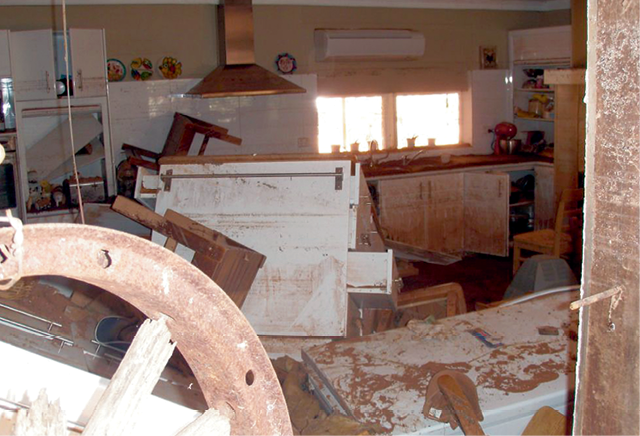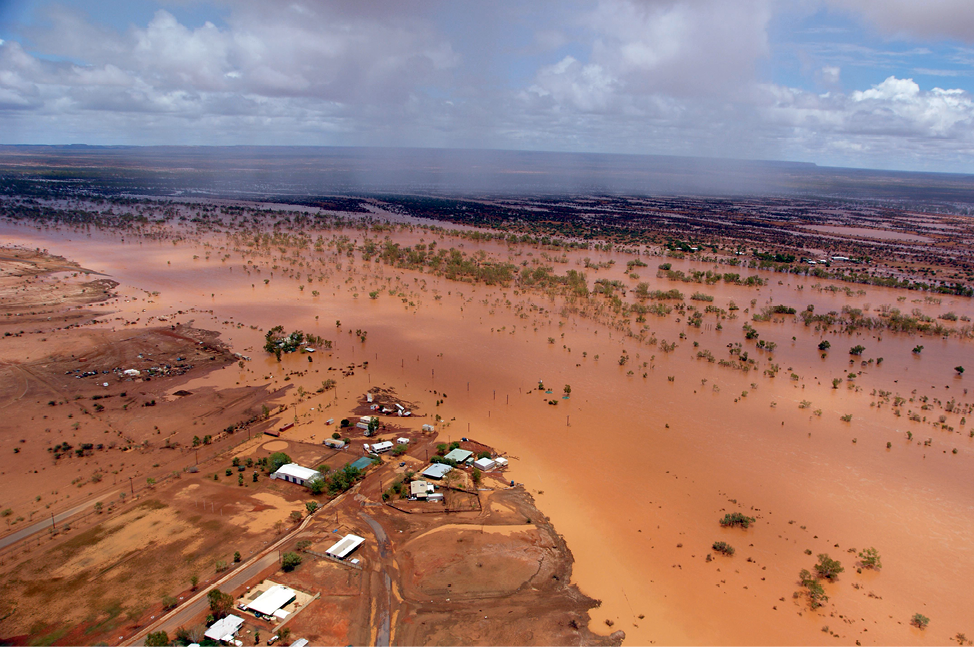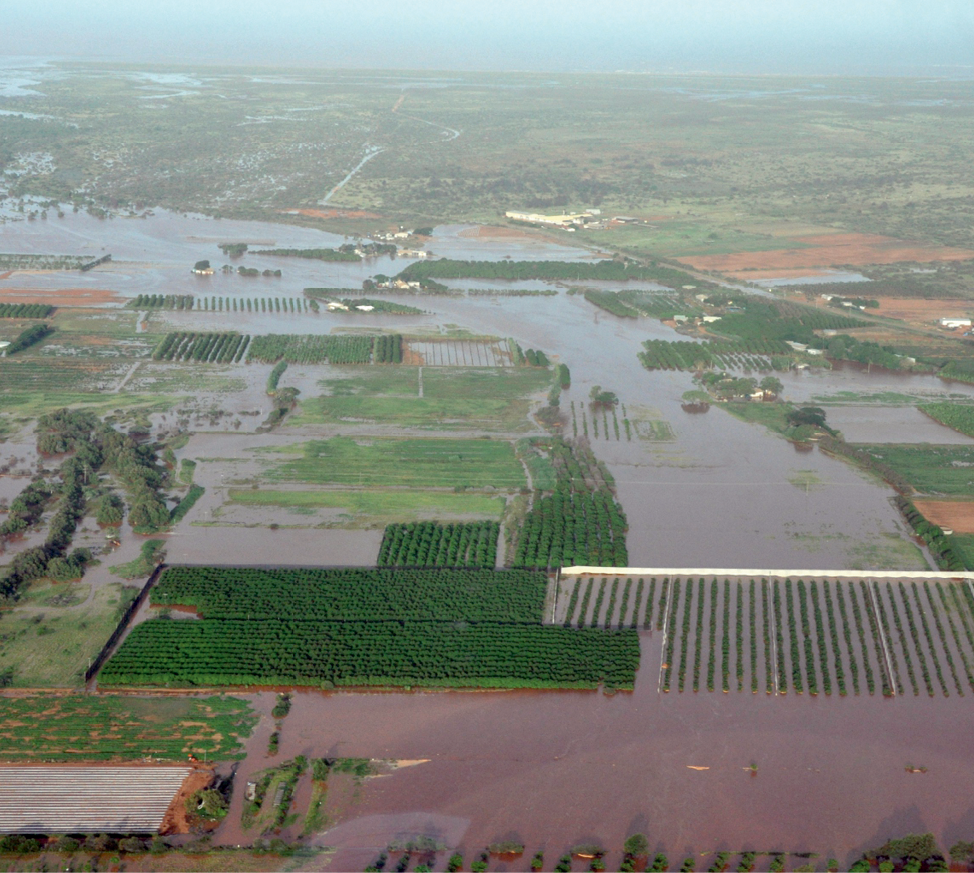
Tim Dalwood thought he knew what he was in for. For about a week, he watched as a monsoonal low made its way across the Indian Ocean from below Java towards the coast of Western Australia.
He knew, as a district manager of the state’s Fire and Emergency Services Authority, the destruction this sort of weather pattern could bring. He also took regular updates from the Bureau of Meteorology. Based on the bureau’s advice, this had the real potential to be a large cyclone.
A month earlier, he had issued a warning to his community of what even at that stage looked like being an early and busy cyclone season. He encouraged people to prepare themselves and their homes.
As they watched the low making its way towards them in December last year, Mr Dalwood and his team planned for the worst, by determining what they would need to do if the low turned into a cyclone: what staffing levels were required, and which assets and resources they could use. They decided they would need the help of a lot of SES members, people with chainsaws, clean-up crews and bobcats and trucks to take away the debris.
But the cyclone never formed. Instead, when the low hit Western Australia in mid December, it dumped a year’s worth of rain in about a day, 300mm. The mean December rainfall for the region is about 5mm.
.png)
“We were waiting for it to turn into a cyclone, as they normally do. This was totally different,” Mr Dalwood says.
Mr Dalwood says he and his team had considered contingency plans, and whether the low could cause a flood.
It started to rain on the Thursday night, December 16 and by Saturday night, the area around Carnarvon on the mid-west coast was completely inundated.
“On the Saturday morning we realised there were going to be severe issues,” Mr Dalwood says.
“We had a conversation with the Bureau and from there we decided to escalate what we were doing. We deployed from the Geraldton regional office into Carnarvon and we basically started to prepare from there. We had an incident management team set up, we had our mitigation work on the go, we ensured all our levees were strengthened and we enforced our contingency plans. We had evacuation plans, we opened up the relocation centres, we had all of those ready to go.”
The people needing shelter came thick and fast, he says.
“From there came a myriad of other issues, like feeding people and bedding people, finding blankets—all these things that you plan for, but it’s very difficult to keep three or four or five-hundred blankets on standby, or 300 mattresses.”
Help came from all quarters, especially from the Department of Child Protection who had stockpiles of bedding flown up from Perth. Local church groups also rallied to provide whatever was still needed.
“Obviously you change things as things unfold,” Mr Dalwood says.
“With a flood, different to a cyclonic wind event, of course, we’re talking evacuations, relocations, inundation of water, isolation and not a lot is done on the ground because obviously you can’t get to it. So you’re talking flood boats and helicopters.”
The people in Carnarvon are no strangers to flooding, in fact, the town is protected by a surge wall. But this was different.
The Bureau first issued a flood watch alert for the Gascoyne catchment area on the Wednesday, saying the low could bring 150 – 200mm of rain within 72 hours.
From Friday night, the Gascoyne River started to rise and the alert was upgraded to a flood warning the next day. River levels then rose to some of their highest on record.
The floods wiped out vegetable crops and fruit plantations, and at least 2000 cattle drowned. In describing the event, the Bureau noted that pastoral livelihoods were destroyed in the area, as they went from drought to flood in just 24 hours. The total damage bill from the deluge has been estimated at $100 million.
Mr Dalwood says it is impossible for him to compare the rain and floods of December last year with any work he has done in the past.
“The magnitude of what it is, it’s the biggest recorded event that the mid-west Gascoyne has ever had,” he says.
About 180 people were housed at the relocation centre and Mr Dalwood says there were about 100 more outside in the car park, in caravans.
“There were 2000 or so people who went through recovery centre doors. Looking for support and information.”
Outside the town, roads were cut off everywhere, meaning about 70 sheep and cattle stations, as well as indigenous communities, were isolated.
FESA, with the Department of Agriculture, and others compiled lists of stations, who owned them and how many people were there, whether they were isolated, and what their basic needs were, Mr Dalwood says

Typical household flood damage.
Phones were down so helicopters were used to fly into the stations to get the information.
“Telstra came back online very quickly with mobile network coverage, which was great. Some of them (on the stations) had wireless internet, which was even better. We would communicate with these people, on a roster, every day. From there, we were designing and preparing resupply routes and lists of what their basic needs were.”

Aerial shot of the flooding in the mid-west Gasgoyne region.
Some people were sleeping on woolpacks on the ground in the shed because their houses had been washed away. They were supplied with swags and camp stretchers. All the stations received food, water and medical supplies if they needed them.
This resupply operation continued for 100 days while the roads remained impassable, Mr Dalwood says.
“We had half-dozen people working purely on resupply. That was their focus, to make sure all those isolated communities weren’t forgotten.
“Once the initial flood had passed, there was that much work for them to do, most of them stayed because of that. There was a lot of cattle they had to put down, there was a lot of clean-up work.”
It was also Christmas. Mr Dalwood says this made the FESA task even more difficult.
“We’re talking about deploying personnel. To drag people out of their family environments at Christmas was the hardest part. A lot of people are on holidays or on leave, there’s a shortage of staff, all the volunteers that you normally rely on―it’s very hard to say look, I know it’s Christmas but you need to leave Geraldton and fly up to Carnarvon for a week.
“They all stood up and said ‘yes, yes mate, not a problem, I’m there’. The community really did rally from the whole mid-west region, we had people from everywhere. Volunteers came from Perth, from Bunbury, from Albany, everywhere. All over Christmas.”
The flood was not the only natural disaster testing Western Australia over the summer months. Severe thunderstorms also buffeted the west and its driest winter on record led to bushfires at Lake Clifton in January and in the Perth Hills in February. In March, more flooding swamped the north of the state, in the Kimberley. Floodwaters at Warmun, in the east Kimberley, caused so much damage the town was left uninhabitable. Hundreds of people were evacuated to Kununurra. A large section of the community’s art collection was destroyed, about 800 paintings. The centre supports about 75 indigenous artists. The gallery has since received a $30,000 federal grant to help it recover, on top of the $8 million provided to the community as a whole.

Aerial shot of the flooding of farming areas in the mid-west Gasgoyne region.
As disasters tend to do, the Kimberley floods also brought people closer.
When the remote community school of Bayulu was cut off by floodwaters, eight teachers were airlifted in from their homes in nearby Fitzroy Crossing. They slept on swags in classrooms for a week to keep the school open.
But much of this has been overshadowed, at least in the minds of other Australians, by the Queensland floods. And, despite the several major disasters in the west, no lives were lost.
Mr Dalwood, who is responsible for operations in the mid-west Gascoyne region, says he learnt a lot from the experience and that the Carnarvon community is recovering. “The crops are back in the ground, they’ve replaced all the top soil that was lost, Shires have been working hard replacing and fixing all the roads that were damaged.”
“Individually everybody learns lessons as the disaster unfolds, and throughout this disaster, we all learnt personal lessons.”